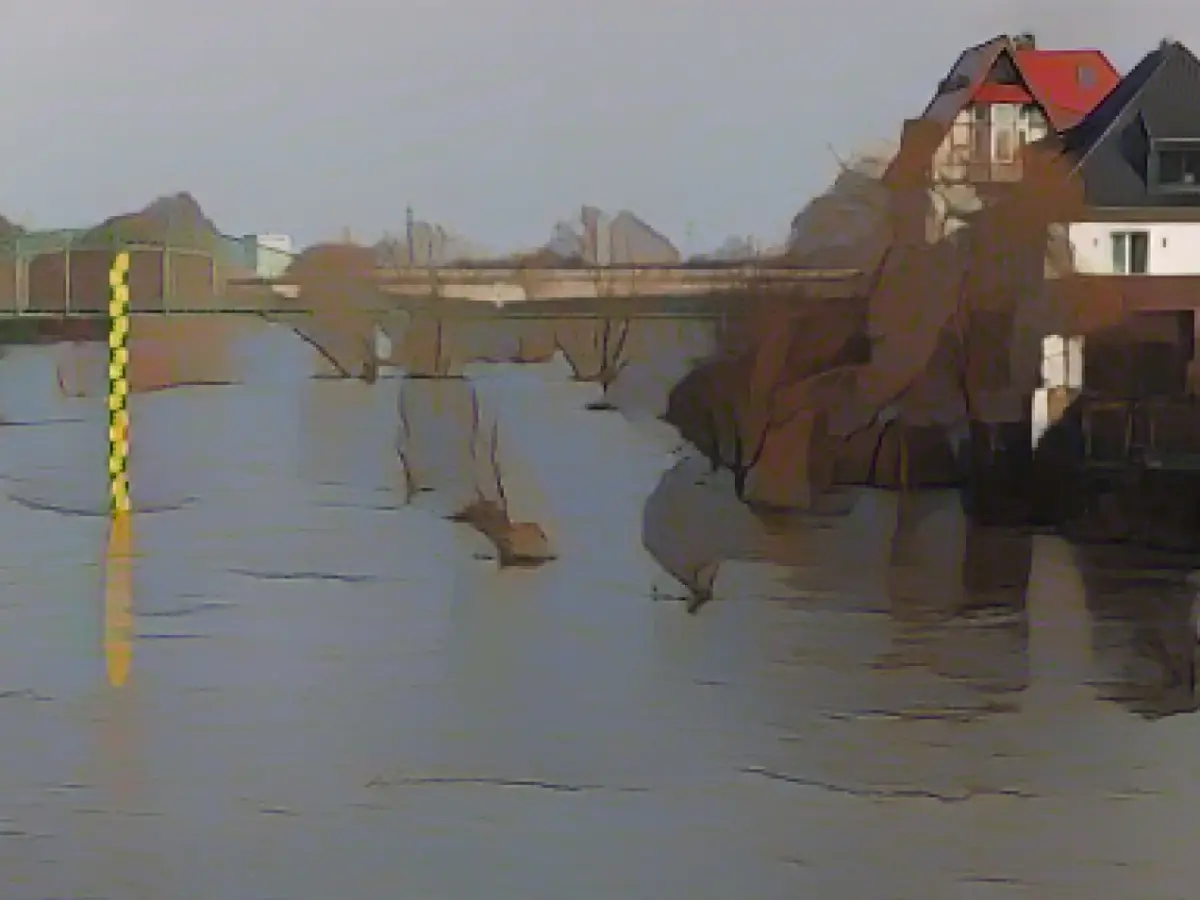Storm - Situation in flood areas also tense on New Year's Eve
The deployment of thousands of helpers in the flood areas in parts of Germany continues on New Year's Eve. On Sunday night, many water levels in Lower Saxony were at the second-highest reporting level. The emergency services are particularly concerned about the dykes, many of which are softened and could break. The German Weather Service (DWD) predicted showery rain in some areas in the north-west and west for the morning of New Year's Eve. Meanwhile, Chancellor Olaf Scholz (SPD) is planning a visit to the flood areas to thank helpers and show solidarity, according to a report in Bild.
According to the newspaper, Scholz wants to show those affected that the government will not leave them alone in this difficult situation, the "Bild" portal reported on Saturday evening. The exact time and place of the visit are still secret. There was still no official confirmation on Sunday night.
Parts of Lower Saxony, southern Saxony-Anhalt on the border with Thuringia and areas in North Rhine-Westphalia have been particularly affected by flooding. The all-clear has recently been given in some places. The Lower Saxony State Agency for Water Management, Coastal Defence and Nature Conservation, for example, announced that several water levels had peaked and would fall again. According to the information, however, the water levels in the middle and lower reaches of the Aller, Leine and Oker would remain at the current level for the time being.
Lower Saxony's Interior Minister Daniela Behrens (SPD) told "Der Spiegel": "Further rainfall has been announced and there could also be storms. Nevertheless, we do not currently expect the forecast rain to dramatically worsen the situation." The DWD has forecast persistent and heavy rain in parts of Germany for Tuesday. There is great concern that the situation on the rivers could worsen again.
Calls to refrain from New Year's Eve fireworks
For many emergency services, at least major New Year's Eve celebrations are likely to be canceled. To save them extra work, several cities in Lower Saxony have recommended that fireworks and firecrackers be avoided on New Year's Eve, for example the city of Celle. The emergency services were already working at full capacity with the floods. Environment Minister Christian Meyer (Greens) also recommended not using firecrackers on New Year's Eve in areas affected by flooding.
In some cases, firecrackers were also banned, such as in the municipality of Lilienthal in the district of Osterholz near Bremen. The district also feared that many onlookers would be out and about in the flood area on New Year's Eve. Behrens described onlookers and disaster tourists as annoying. "Many of them travel here just to see the masses of water. They ignore the barriers." There have already been several cases where the fire department has had to rescue onlookers, said the Minister of the Interior.
Disaster situation in the Mansfeld-Südharz district
The emergency services also have a lot to do in other parts of the state. The flood situation remains critical in several towns on the River Helme on the border between Thuringia and Saxony-Anhalt. The district of Mansfeld-Südharz declared a state of emergency on Saturday. According to the mayor of the municipality of Südharz, Peter Kohl, collection points were set up in two gymnasiums on Saturday evening as a precautionary measure. Despite the declaration of a state of disaster, nothing has changed in terms of practical work.
On the Elbe near Tangermünde in northern Saxony-Anhalt, the authorities expected the second of four alert levels to be exceeded on Saturday. In Saxony and North Rhine-Westphalia, the authorities had cautiously spoken of an easing of the situation.
Read also:
- Floods: water levels remain critical in many places
- Snow chaos further restricts Bavaria
- Continuous operation in the flood areas
- Flood situation remains tense in many places
- Emergency services in North Rhine-Westphalia are working diligently to manage the flooding situations, just like in other affected regions such as Lower Saxony and Saxony-Anhalt.
- The flood waters in the North Rhine-Westphalia region have caused significant concern, with many areas experiencing severe flooding and softened dykes that could potentially break.
- Chancellor Olaf Scholz (SPD) has plans to visit flood-stricken areas in Germany on New Year's Eve, aiming to offer gratitude and solidarity to those affected and reiterate the government's commitment.
- As of Sunday night, the city of Hanover in Lower Saxony was under the second-highest reporting level for water, with many dykes remaining vulnerable to breaking due to the relentless rain.
- In a report by "Der Spiegel," Lower Saxony's Interior Minister Daniela Behrens (SPD) highlighted the potential for further rainfall and storms, but she does not expect an exacerbation of the current situation.
- According to the German Weather Service (DWD), heavy rainfall is expected on Tuesday in regions across Germany, causing great concern about the potential worsening of the flood conditions on various rivers.
- Many cities, including Hanover, in Lower Saxony have recommended temporarily refraining from using fireworks and firecrackers this New Year's Eve to allow emergency services to focus on the continued flood relief efforts.
- In Thuringia, near the border with Saxony-Anhalt, the situation remains critical in several towns along the River Helme, with the Mansfeld-Südharz district declaring a state of emergency and setting up collection points as a precaution.
- As the weather in Germany continues to be unpredictable, with heavy rain and potential storms in certain areas, residents and emergency services will need to remain vigilant and prepared to manage the challenging flooding conditions.
Source: www.stern.de






